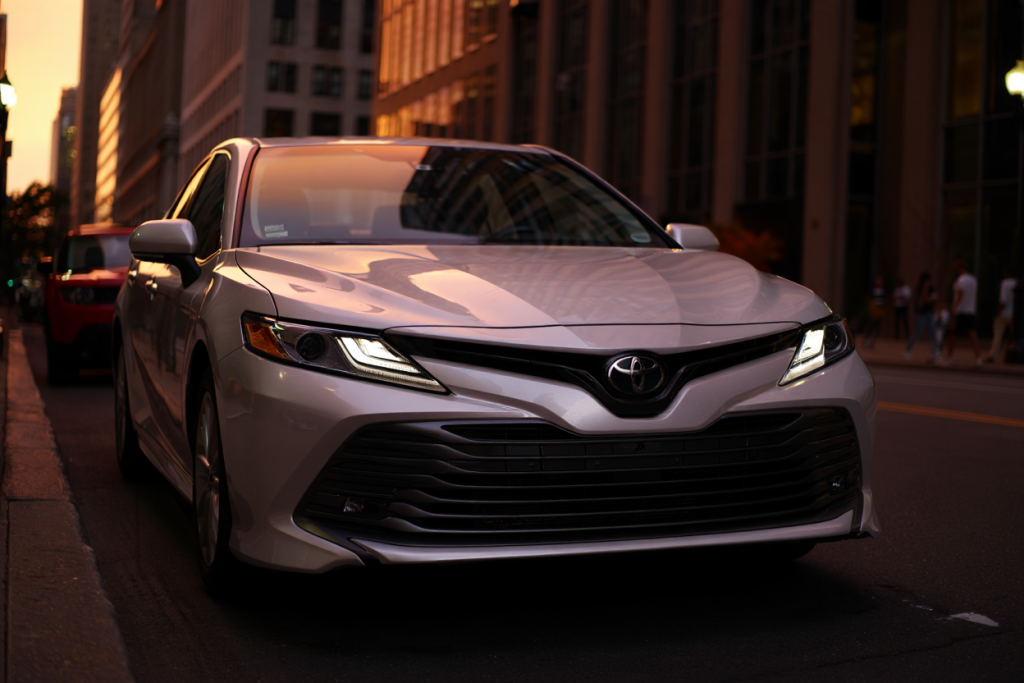Your windshield wipers are one of the most crucial safety components on your car. They ensure clear visibility in rain, snow, dust, and other road hazards. Without properly functioning wiper blades, driving in adverse weather conditions becomes risky, potentially leading to accidents.
Yet, many drivers struggle to choose between traditional rubber blades and premium silicone blades. While both perform the basic function of wiping water and debris, they differ significantly in construction, durability, noise, weather resistance, and maintenance needs.
Understanding Windshield Wiper Blades
How Wiper Blades Work
Wiper blades remove water, debris, and dust from the windshield to ensure a clear line of sight. A blade consists of:
- Flexible edge: Usually rubber or silicone, which contacts the glass
- Metal or plastic frame: Holds the blade and allows it to pivot across the windshield
- Attachment mechanism: Connects to the wiper arm
As the wiper moves, the blade scrapes water and debris across the windshield surface. If the blade is worn, streaks, skipping, or chatter occurs, reducing visibility and increasing accident risk.
Types of Wiper Blade Materials
There are three main material types:
![]()
- Rubber Blades: Standard on most vehicles; natural or synthetic rubber provides flexibility but wears quickly.
- Silicone Blades: Rubber core coated with silicone; more durable, elastic, and weather-resistant.
- Hybrid Blades: Combine metal or synthetic frames with silicone-coated rubber blades for enhanced performance.
Each material affects: lifespan, performance in different weather, noise, and cost.
Rubber Wiper Blades
Construction and Features
Rubber blades are made from natural or synthetic rubber. Their primary advantage is affordability, lightweight construction, and flexibility, making them ideal for moderate climates.
Key characteristics:
- Flexible wiping edge
- Simple frame and attachment mechanism
- Common OEM choice
Performance in Different Conditions
Rubber blades perform adequately in moderate rain and dust but have limitations:
- Extreme heat: Rubber can harden and shrink, causing streaks
- Cold weather: Rubber becomes brittle, may crack or tear
- Snow and ice: Skipping or chatter can occur if ice sticks to the blade
Example: A 2018 Toyota Corolla in Florida’s summer heat may see OEM rubber blades leave streaks during heavy rain due to softening and deformation.
Pros and Cons
Pros:
- Affordable ($10–$20 per blade)
- Easy to replace
- Widely available
Cons:
- Short lifespan (6–12 months)
- Prone to cracking, shrinking, or streaking
- Moderate performance in extreme weather
Silicone Wiper Blades
Construction and Features
Silicone blades feature a rubber core coated with silicone, giving them superior elasticity and weather resistance. Many premium blades include a hydrophobic coating that repels water, enhancing visibility.
Key features:
- High elasticity prevents cracking
- Water-repellent coating reduces streaks
- Smooth and quiet operation
Performance in Different Conditions
Silicone blades excel in almost every condition:
- Hot weather: Resistant to UV damage and heat, retaining flexibility
- Cold weather: Remains pliable, reducing brittleness
- Snow and ice: Repels water and prevents ice buildup on the blade
- Rain: Hydrophobic coating improves wiping efficiency and reduces streaking
Example: A Subaru Outback in snowy Minnesota performs better with silicone blades. Rubber blades may harden, streak, or freeze, while silicone maintains a clean windshield with minimal chatter.
Pros and Cons
Pros:
- Longer lifespan (2–3 years)
- Quieter operation
- Excellent weather resistance
- Hydrophobic coating improves visibility
Cons:
- Higher upfront cost ($20–$40 per blade)
- Slightly less common than rubber in some markets
- Requires checking size and compatibility
Hybrid Wiper Blades
Construction and Features
Hybrid blades combine the durability of silicone with a protective frame or additional coatings to improve performance:
- Reinforced frame for pressure distribution
- Silicone or coated rubber blade for superior wiping
- Often quieter and longer-lasting than standard rubber
Pros and Cons
Pros:
- Even coverage across the windshield
- Longer lifespan and quieter operation
- Resistant to weather extremes
Cons:
- More expensive than standard rubber
- May require specific OEM or aftermarket sizes
Example: A 2020 Honda CR-V with hybrid blades in rainy Seattle stays streak-free and quiet during prolonged downpours, outperforming OEM rubber blades.
Silicone vs. Rubber: Side-by-Side Comparison
| Feature | Rubber | Silicone | Hybrid |
| Lifespan | 6–12 months | 2–3 years | 2–3 years |
| Cost | $10–$20 | $20–$40 | $25–$45 |
| Noise | Moderate | Quiet | Very quiet |
| Weather Resistance | Moderate | Excellent | Excellent |
| Water Repelling | Low | High | High |
| Best Use | Mild climates | Extreme climates | All climates |
![]()
This comparison highlights that silicone or hybrid blades are often a better long-term investment, especially in regions with harsh weather.
OEM vs Aftermarket Considerations
- OEM Rubber Blades: Standard on most vehicles, fit perfectly, and widely available.
- Aftermarket Silicone or Hybrid Blades: Premium brands like Bosch, Rain-X, Trico, and Anco provide superior performance and longer lifespan.
- Warranty: OEM blades may be covered under vehicle warranty; aftermarket usually comes with a 1–2 year guarantee.
- Cost vs. Longevity: Silicone blades cost more upfront but last 2–3 times longer, making them more cost-effective over time.
Pro tip: Always verify blade size and compatibility when buying aftermarket options.
Common Mistakes Car Owners Make
- Waiting too long to replace blades: Leads to streaks, scratches, and reduced visibility.
- Using incorrect size: Results in uneven wiping and reduced coverage.
- Neglecting seasonal changes: Rubber blades crack in winter; silicone performs better year-round.
- Using harsh chemicals: Damages the blade material and reduces lifespan.
- Ignoring frame damage: Bent or corroded frames prevent proper wiping.
Practical Tips for Longer Wiper Blade Life
- Clean windshield and blades regularly: Dirt and grit reduce efficiency.
- Lift blades in winter: Prevents ice adhesion.
- Avoid leaving blades on hot glass: Reduces deformation in summer.
- Inspect for streaks, skipping, or chatter: Replace worn blades promptly.
- Replace both blades simultaneously: Maintains balanced wiping.
- Use silicone for extreme climates: Reduces weather-related damage.
Example: In winter New York, silicone blades lifted overnight resisted ice adhesion, while rubber blades cracked after repeated freezing.
Real-World Vehicle Examples
- Toyota Camry (2019): OEM rubber blades lasted 10 months in Florida; replaced with silicone for quieter, longer-lasting performance.
- Honda CR-V (2021): Silicone blades remained streak-free during heavy snowfalls in Colorado.
- Ford F-150 (2018): Hybrid silicone-rubber blades offered superior quiet operation in mixed weather compared to standard OEM rubber.
- Mazda CX-5 (2020): Silicone blades reduced streaking in rainy Seattle, outperforming rubber in both performance and longevity.
Seasonal Tips
- Winter: Lift blades to prevent freezing; silicone is preferred.
- Summer: Avoid leaving blades pressed on hot glass; silicone resists UV damage.
- Rainy season: Replace old rubber blades to avoid streaks; silicone blades last longer.
- Dusty climates: Clean blades and windshield frequently to prevent scratches.
How to Choose the Right Wiper Blades?
- Check vehicle manual: Ensure correct size and recommended type.
- Consider climate: Silicone for extreme, rubber for moderate.
- Budget: Rubber is cheaper short-term; silicone saves money long-term.
- Inspect frame: Ensure no cracks or corrosion.
- Choose reliable brands: Bosch, Rain-X, Trico, Anco.
- Consider hybrid options: For high-performance or extreme-weather driving.
Conclusion
Choosing the right wiper blade is essential for safe, clear visibility. Rubber blades are affordable and adequate in moderate conditions. Silicone blades offer longer life, quieter operation, and superior weather performance. Hybrid blades combine the benefits of both materials for premium performance.
Regular inspections, cleaning, seasonal adjustments, and proactive replacement ensure optimal performance and safety. For drivers in extreme climates or those seeking long-lasting, quiet, streak-free wiping, silicone or hybrid blades are a smart investment.
FAQs
How often should I replace wiper blades?
Replace rubber blades every 6–12 months, silicone every 2–3 years. Extreme weather may shorten lifespan. Signs include streaking, skipping, squeaking, or reduced visibility.
Can I mix silicone and rubber blades on the same vehicle?
Technically possible but not recommended. Differences in flexibility can reduce overall wiping performance. For optimal performance, use the same type and brand on both sides.
Do silicone blades scratch windshields?
No. Quality silicone blades are softer than rubber and include protective coatings. Only damaged or improperly installed blades can cause scratches.
Are silicone blades really quieter than rubber?
Yes. Silicone’s elasticity reduces chatter and vibration. Users report smoother, quieter operation, especially at high speeds or heavy rain.
Is it worth paying more for silicone wiper blades?
Yes. Silicone lasts longer, performs better in extreme weather, and reduces streaks and noise. The upfront cost is offset by improved longevity and safety.
How do I choose the right size for my windshield?
Check your vehicle manual or measure the existing blades. Correct sizing ensures full windshield coverage and optimal wiping performance.

Benjamin Grey is an automotive engineer and writer at Car Parts Advisor. With years of experience in the automotive industry, he shares expert advice on car parts, maintenance, and repairs to help car owners keep their vehicles running smoothly.




